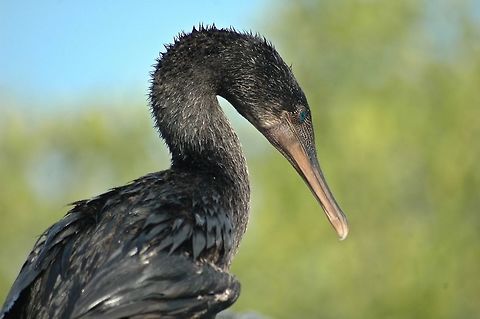 PromotedSpecies introCountry intro
PromotedSpecies introCountry intro
GalapagosFlightless Cormorant - Phalacrocorax harrisi
The Flightless Cormorant - Phalacrocorax harrisi, also known as the Galapagos cormorant, is a cormorant native to the Galapagos Islands, and an example of the highly unusual fauna there. It is unique in that it is the only cormorant that has lost the ability to fly. Like all cormorants, this bird has webbed feet and powerful legs that propel it through ocean waters as it seeks its prey of fish, eels, small octopuses, and other small creatures. They feed near the sea floor and no more than 100 m offshore. The flightless cormorant is the largest extant member of its family, 89–100 cm (35–40 in) in length and weighing 2.5–5.0 kg (5.5-11 lbs), and its wings are about one-third the size that would be required for a bird of its proportions to fly. The keel on the breastbone, where birds attach the large muscles needed for flight, is also greatly reduced. The flightless cormorants look slightly like a duck, except for their short, stubby wings. The upperparts are blackish and the underparts are brown. The long beak is hooked at the tip and the eye is turquoise. Like all members of the cormorant family, all four toes are joined by webbed skin. Males and females are similar in appearance, although males tend to be larger. Juveniles are generally similar to adults but differ in that they are glossy black in colour with a dark eye. Adults produce low growling vocalizations. Like other cormorants, this bird's feathers are not waterproof, and they spend time after each dive drying their small wings in the sunlight.

The flightless cormorant , also known as the Galapagos cormorant, is a cormorant native to the Galapagos Islands, and an example of the highly unusual fauna there. It is unique in that it is the only cormorant that has lost the ability to fly. Once it was placed in its own genus, ''Nannopterum'' or ''Compsohalieus'', although current taxonomy places it in the genus with most of the other cormorants, ''Phalacrocorax''.
